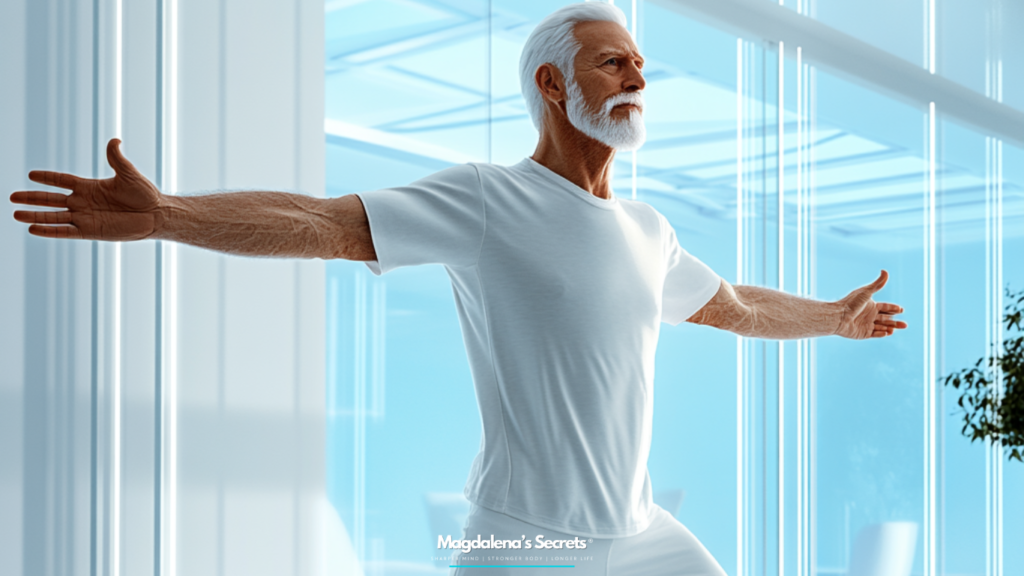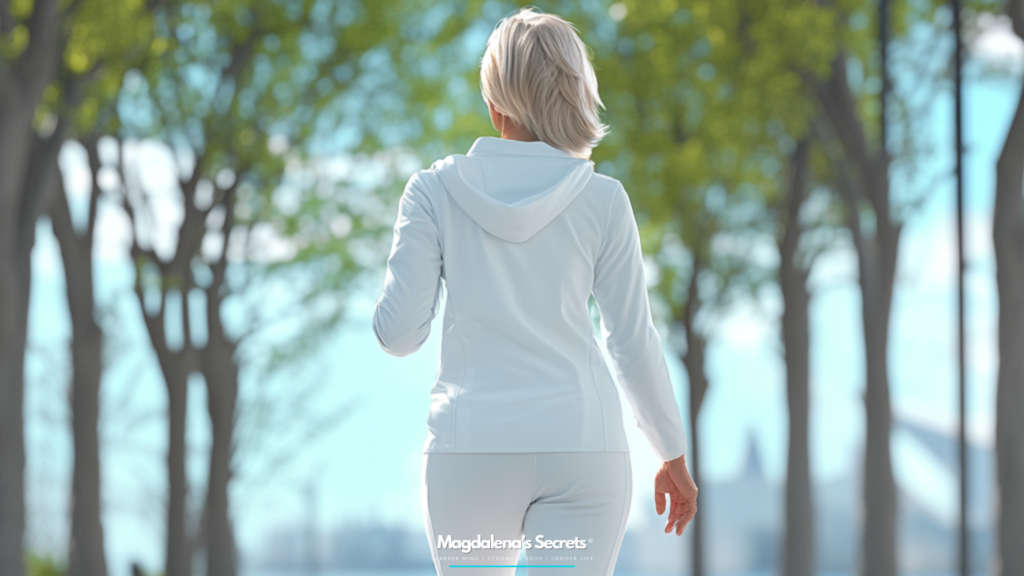As we age, it’s not just our skin that changes or our energy that shifts — something much deeper happens: we begin to lose muscle mass, a process known as sarcopenia. Starting as early as our 30s, we naturally lose 3–8% of muscle per decade, accelerating after age 60.
But this decline isn’t inevitable.
Experts like Dr. Tina Moore and Dr. Peter Attia emphasize that maintaining and building muscle is one of the most powerful ways to slow aging, extend healthspan, and remain independent later in life.
Why Muscle Is the Cornerstone of Healthy Aging
Muscle isn’t just for athletes — it’s a vital organ of longevity. Dr. Peter Attia often refers to muscle mass as the body’s “currency of aging.” He considers it one of the top predictors of long-term independence — the ability to climb stairs, carry groceries, or recover from a fall.
Dr. Tina Moore also highlights that muscle is metabolically active tissue, essential for:
- Blood sugar regulation
- Hormonal balance
- Immune resilience
- Brain and cognitive health
Muscle protects us — from disease, decline, and dependence.
Muscle and Metabolic Health
Muscle is the main site of glucose disposal, meaning it helps maintain healthy insulin sensitivity and blood sugar levels. This becomes more important with age, as the risk for metabolic disorders like type 2 diabetes increases.
According to Dr. Attia, building and maintaining lean mass:
- Improves blood biomarkers
- Reduces visceral fat
- Supports mitochondrial health
- Promotes energy and cellular repair
How to Build and Maintain Muscle as You Age
1. Resistance Training: Your Foundation
Strength training is essential. Dr. Attia recommends training with your “Centenarian Decade” in mind — preparing your body for what it needs to function well in your 80s and beyond.
Focus on compound movements like:
- Squats
- Deadlifts
- Pull-ups or rows
- Push-ups or bench press
- Lunges and step-ups
Start light. Build gradually. Stay consistent.
2. Plyometrics and Balance
Dr. Tina Moore integrates stability and impact training to enhance coordination and prevent falls.
Add:
- Low-impact jumps
- Step-downs
- Balance drills (standing on one leg, BOSU work, etc.)
These simple moves translate into better agility and real-world resilience.
3. Prioritize Protein
Even the best workouts won’t work without enough dietary protein. Due to anabolic resistance, older adults need more protein to stimulate muscle growth.
Dr. Moore and Dr. Attia suggest:
- 1.6–2.2g of protein per kg of body weight daily
- Spread intake evenly across meals
- Use high-quality sources: eggs, lean meat, fish, Greek yogurt, protein powder
Protein is the raw material for regeneration.
Final Thoughts: Muscle Is Youth Insurance
If you want to live independently and actively into your 70s, 80s, and 90s — build your muscle now. As Dr. Attia says:
“It’s much harder to build muscle in your 70s than in your 40s — but you’ll wish you did when you get there.”
It’s never too late to start, but the earlier you do, the stronger your foundation for healthy aging.
Muscle isn’t vanity — it’s vitality. Treat it like your long-term health savings account, and keep investing.
Ready for the next article or want to bundle these into a digital eBook or carousel series for socials? Let’s do it!




